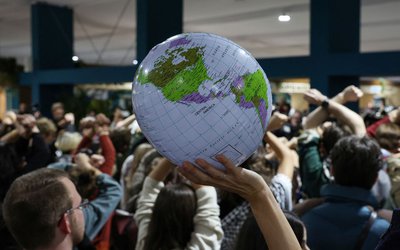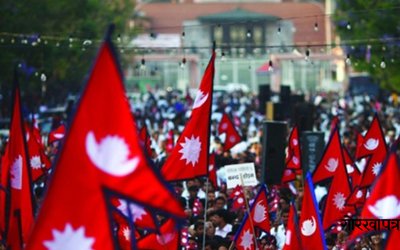More on Opinion




Two months have passed since Nepal was rocked by a series of devastating earthquakes. The tremors continue, but it appears that the earth is finally settling and some respite may be had – for a short while at least, until the monsoon rains bring their annual havoc of landslides and floods, which are certain to be far worse this year owing to quake-induced geologic instability. The situation, meanwhile, remains desperately grim for the two million Nepalis who have survived in the 30-odd districts affected by the earthquakes.
Food insecurity has stalked two to three million Nepalis for decades, and poor education and ill health remain fierce, ongoing battles in Nepal’s war against poverty. Photo/Conor Ashleigh
It is ironic that the price for the physical beauty of Nepal seems to be the perennial vulnerability of its people. Not that Nepalis are given to much lament; they are a stoic people of many faiths for whom self-help has acquired greater meaning in recent times. But irony aside, what can be learned from the lived experiences of the past two months? For example, are there elements of Nepal’s vulnerability that can be better understood and managed by those who seek to govern? Certainly, the earthquakes were predicted, and the monsoons arrive like clockwork each year. Food insecurity has stalked two to three million Nepalis for decades, and poor education and ill health remain fierce, ongoing battles in Nepal’s war against poverty. The most marginalized continue to be women and girl children of all social strata: disasters victimize them even more.
One easy lesson, from the massive levels of civic engagement and volunteerism in the aftermath of the earthquakes, is that coping with disasters requires cooperation between public servants and private citizens. However, disaster management planning and preparedness in Nepal are subject to the same vagaries of governance that have plagued this country for decades.
Nepal’s vulnerability is not unfamiliar, but it is left unaddressed, like many other lingering public policy problems, until a momentous event provides enough shock to shift preferences, positions, and priorities. Take, for example, the stuttering constitutional development process and the sudden rash of fresh negotiations among the four major political parties during May and June: the quake shocked Nepal’s narrowly self-interested political class into action. However expedient and self-serving they appear, the negotiations have loosened the Gordian knot that was choking political progress. Agreeing on the number of federal provinces while deferring to a technical committee for their delineation allows for a more measured determination of provincial viability. The flirtation with the idea of a directly elected president seems over, returning supremacy to a parliament, a safely familiar if stultifying democratic experience for Nepalis in the last two decades. Although Nepal’s judiciary and bar are yet to weigh in, the agreement on a separate, limited-term constitutional court versus a constitutional bench in the existing Supreme Court also represents movement, at least on the political front. Taken together, these agreements have turned a deadlock into an opportunity for progress, not only for the constitution, but also for two other languishing problems: local government elections and citizenship.
Despite no local elections for almost two decades, the Local Self-Governance Act 1999 (LSGA) has continued to apply to local bodies in Nepal, through government-appointed bureaucrats. While this has helped to decentralize development and enabled local stakeholders to participate in the planning process, the lack of accountability in the absence of elections has severely distorted local governance and fostered a culture of collusion and impunity. Research by The Asia Foundation [here, here, and here] and others shows clearly that local governments in Nepal have been influenced and controlled by political elites, primarily through the capture of budgetary and resource allocation processes. State oversight and caretaker institutions have been unable to mitigate this problem; nor have non-state coalitions that promote transparency and accountability in government.
The absence of elected local representatives was sorely felt during earthquake relief efforts, not only by those dispensing and receiving relief, but also by those who sought political mileage in the aftermath. Relief efforts have produced a new crop of potential local leaders, who represent both opportunity and challenge for Nepal’s political parties. On the one hand, it is clear that local elections cannot be sidelined for much longer if the country is to rebuild and recover: it is impossible to orchestrate a development and reconstruction effort of this magnitude from Kathmandu. Donors and government should consider elected local government as an essential element of “building back better.” On the other hand, the timing of local elections is of existential concern for many political parties, which could lose or gain large swaths of territory at the local level if elections are mistimed. In this situation, it is a hopeful sign that the recent political negotiations have included reference to local government elections. And surely, any deal on federalization will include the timing of local elections, with an earlier date being better for rebuilding purposes.
A far more egregious situation is the continuing impasse over citizenship and statelessness in Nepal. This has become an enduring political issue, born of a patriarchal mindset that treats women as second-class citizens, and nurtured assiduously on the false logic of a national security threat from Indian men marrying Nepali women. Over the past several years of the constitution-drafting process, committee discussions and draft language have consistently denied Nepali citizenship to children who can’t prove that they have Nepali fathers. How then to give a sense of belonging to those who are born to a Nepali mother, regardless of her husband or male relatives? How about those who have neither parent? Disasters in the developing world tend to disproportionately affect women and children, and Nepal’s experience is no different. Instead of taking a compassionate view in the wake of disaster, the latest draft on citizenship from the Constitutional Political Dialogue and Consensus Committee perpetuates this victimization of women and children in Nepal.
As the last several weeks have shown, earthquakes and other disasters represent both opportunity and challenge – to rediscover community and compassion, to reconsider dogmas and dilemmas, and to find the resolve to press forward on seemingly intractable problems, among which constitutional politics has loomed large. There is now an opportunity for Nepal’s political class to turn their agreed ideas on a constitutional framework into sensible deeds that will build a just and democratic nation.
The views and opinions expressed here are those of the author, not those of The Asia Foundation.






